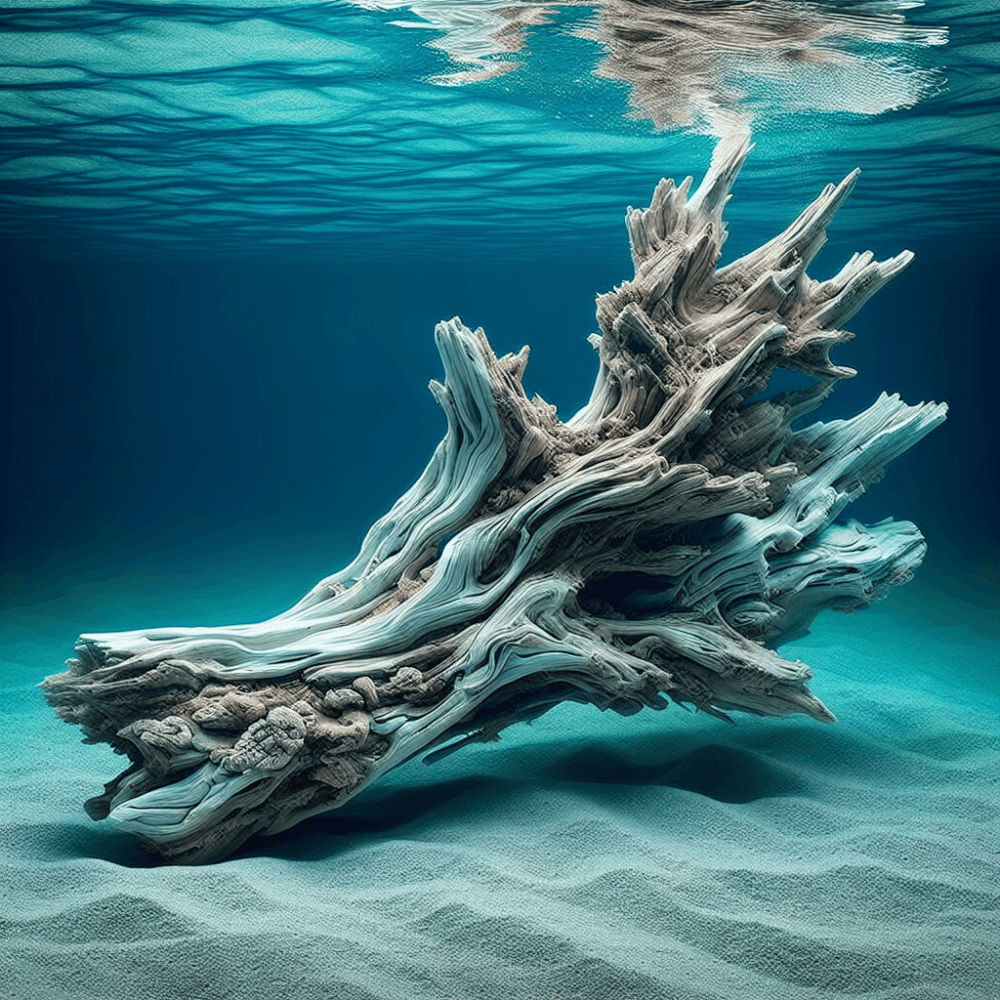You’ve probably wondered if having driftwood in your aquarium could affect the pH levels. Well, in this article, we’ll explore the fascinating question: Does driftwood lower the pH? Many aquarium enthusiasts have debated this topic for years, and it’s time to uncover the truth. From understanding the chemistry behind driftwood to looking at real-life experiences, we’ll delve into the intriguing world of aquarium pH levels and driftwood’s potential impact. So, let’s set sail on this aquatic adventure and discover if driftwood truly has the power to lower your aquarium’s pH!
The Composition of Driftwood
Driftwood, as the name suggests, refers to wood that has been washed ashore by water bodies such as rivers, lakes, and oceans. It is a unique type of wood that has undergone various transformations due to the exposure to water and the elements. The composition of driftwood can vary depending on the type of wood it originates from and the length of time it has spent in the water.
Types of wood found in driftwood
Driftwood can be composed of various types of wood, depending on the geographical location and the source of the wood. Common types of wood found in driftwood include oak, pine, cedar, and birch. These woods are often chosen by nature as they have inherent properties that make them resistant to decay and suitable for withstanding the rigors of water exposure.
Chemical composition of driftwood
The chemical composition of driftwood plays a crucial role in its interaction with water chemistry. The primary constituents of driftwood are cellulose, lignin, and hemicellulose. Cellulose is a complex carbohydrate that provides structural support to the wood, while lignin acts as a natural binder, giving the wood its strength and rigidity. Hemicellulose, on the other hand, is a polysaccharide that acts as a glue, binding the cellulose and lignin together.
The Role of Wood Components in Water Chemistry
The components of wood, particularly cellulose, lignin, and hemicellulose, play a significant role in influencing the chemistry of water in aquatic systems. Two key aspects related to water chemistry and driftwood are dissolved organic carbon (DOC) and the effects of tannins on water pH.
Dissolved organic carbon (DOC)
Dissolved organic carbon (DOC) refers to the organic matter present in water that is in a dissolved form. It is an essential component of water chemistry as it provides a source of nutrients for microorganisms and plays a role in the overall balance of aquatic ecosystems. Driftwood, being rich in organic compounds such as cellulose and lignin, can contribute to the concentration of DOC in water.
Effects of tannins on pH
Tannins are a class of compounds that are often present in driftwood. They are responsible for the distinct coloring of water bodies where driftwood is present, giving them a tea-like hue. Tannins have the ability to lower the pH of water due to their acidic nature. When driftwood leaches tannins into the water, it can result in a decrease in pH, making the water more acidic.

The Interaction Between Driftwood and Water Chemistry
The interaction between driftwood and water chemistry goes beyond just the release of organic compounds and tannins. Driftwood can act as a buffering agent, influencing the pH stability of water, and various factors can influence the release of tannins from the wood.
Driftwood as a buffering agent
One of the interesting properties of driftwood is its ability to act as a buffering agent in aquatic systems. A buffering agent helps to stabilize the pH of water by resisting changes in acidity levels. The presence of driftwood can contribute to maintaining a relatively stable pH in the surrounding water, preventing drastic fluctuations that could be harmful to aquatic life.
Factors influencing the release of tannins
The release of tannins from driftwood into the water is influenced by several factors. The type of wood, its age, and the duration of water exposure can all affect the rate and amount of tannin release. Additionally, factors such as water temperature and pH can also impact the leaching of tannins from driftwood. Warmer temperatures and acidic conditions tend to accelerate the release of tannins, leading to a more pronounced effect on water chemistry.
The Influence of Driftwood on pH
The pH of water is a critical parameter that affects the overall health and well-being of aquatic organisms. Driftwood, with its ability to release tannins and act as a buffering agent, can have a notable influence on the pH of water in different aquatic environments.
Alkalinity and pH
The alkalinity of water is closely related to its pH. Alkalinity refers to the capacity of water to resist changes in pH when an acid or base is added. Driftwood, acting as a buffering agent, can contribute to the alkalinity of water, helping to maintain a stable pH. In areas where water is naturally low in alkalinity, the presence of driftwood can be beneficial in preventing pH fluctuations.
Driftwood’s impact on pH in different water types
The impact of driftwood on pH can vary depending on the characteristics of the water it is introduced to. In soft water with low buffering capacity, the release of tannins from driftwood can have a more pronounced effect, leading to a decrease in pH. On the other hand, in hard water with higher alkalinity, the buffering capacity of driftwood may help maintain a more stable pH, preventing significant fluctuations.

Driftwood and Water Hardness
Water hardness refers to the concentration of dissolved minerals, primarily calcium and magnesium ions, in water. Driftwood can play a role in lowering water hardness, contributing to the overall water chemistry in aquatic systems.
Calcium carbonate (CaCO3) and water hardness
The primary mineral responsible for water hardness is calcium carbonate (CaCO3). When water passes through rocks and soil rich in calcium and magnesium compounds, it can dissolve and contribute to the hardness of the water. Driftwood, through the release of organic acids and tannins, can react with calcium ions, forming complexes that lower the concentration of calcium carbonate and, subsequently, the water hardness.
Driftwood’s role in lowering water hardness
The release of organic compounds and tannins from driftwood can react with dissolved minerals like calcium and magnesium, leading to the precipitation of insoluble compounds. This process effectively lowers the concentration of calcium carbonate in the water, reducing water hardness. Driftwood, therefore, plays a role in altering the mineral composition of water and influencing its hardness.
Implications for Aquatic Systems
The presence of driftwood in aquatic systems can have significant implications for water chemistry and the overall health of the ecosystem. Understanding these implications is crucial for maintaining stable conditions in aquariums and natural water bodies.
Effects of driftwood on the pH of aquariums
In aquariums, the addition of driftwood can alter the pH of the water due to the leaching of tannins and the release of organic acids. This acidity can be advantageous or detrimental, depending on the specific requirements of the fish and plants in the aquarium. It is essential for aquarists to monitor the pH regularly and ensure it remains within the optimal range for the organisms they keep.
Role of driftwood in maintaining stable water conditions
Driftwood can act as a natural element that helps maintain stable water conditions in aquatic systems. Its ability to buffer pH fluctuations and reduce water hardness can contribute to the overall well-being of the organisms present. Additionally, the presence of driftwood can provide shelter and natural habitats for aquatic species, enhancing the ecological balance of the ecosystem.
Driftwood as a Natural Filter
Driftwood can perform the role of a natural filter in aquatic systems, aiding in the removal of organic matter and influencing water clarity.
Mechanisms of organic matter removal
Driftwood, with its rough and porous surface, provides an ideal substrate for the colonization of beneficial microorganisms. These microorganisms play a crucial role in breaking down organic matter present in the water, effectively filtering out impurities. The presence of driftwood promotes the growth of a diverse microbial community, enhancing the natural filtration capabilities of the aquatic system.
The impact of driftwood on water clarity
Organic matter, including decaying leaves and uneaten food, can contribute to reduced water clarity in aquariums and natural water bodies. Driftwood acts as a natural filter, aiding in the removal of this organic debris. As the water passes through and interacts with the porous surface of the wood, impurities are trapped and broken down by the microbial community associated with driftwood. This process can lead to improved water clarity, creating a visually appealing environment for both fish and observers.
Driftwood and the Nitrogen Cycle
The nitrogen cycle is a crucial process in aquatic systems, responsible for the conversion of toxic ammonia into less harmful compounds. Driftwood can have beneficial effects on the nitrification process, contributing to the overall health of the ecosystem.
Ammonia removal by driftwood
Ammonia is a toxic compound produced by fish waste, uneaten food, and other organic matter in the water. High levels of ammonia can be detrimental to aquatic organisms. Driftwood, through the activities of beneficial bacteria and microorganisms, can help remove ammonia by facilitating the nitrification process. Nitrifying bacteria colonize the surface of the wood, converting ammonia into nitrites and further into nitrates, which are less harmful to aquatic life.
Beneficial effects on nitrification process
The presence of driftwood in an aquatic system provides additional surface area for the colonization of nitrifying bacteria. These bacteria play a crucial role in the nitrogen cycle, converting toxic compounds into less harmful forms. By enhancing the nitrification process, driftwood promotes a healthier environment for fish and other aquatic organisms, ensuring proper waste management and nutrient cycling.
Potential Risks and Precautions
While driftwood can have several beneficial effects on water chemistry and aquatic ecosystems, it is essential to consider potential risks and take necessary precautions to maintain a balanced environment.
Effect of driftwood on nutrient levels
Driftwood, particularly when newly introduced to an aquarium, can release excess nutrients into the water. This can lead to an increase in nutrient levels, potentially causing imbalances and promoting the growth of undesirable algae. Regular monitoring of nutrient levels and appropriate maintenance practices, such as water changes and nutrient testing, can help mitigate any negative impacts.
Preventing excessive tannin release
The release of tannins from driftwood can result in a tea-like hue in the water, which may or may not be desirable depending on the aquarist’s preference. However, excessive tannin release can lead to murky or dark water, impacting water clarity and potentially inhibiting light penetration necessary for aquatic plant growth. To prevent excessive tannin release, aquarists can pre-soak driftwood or conduct frequent water changes to dilute the tannin concentration.
Conclusion
Driftwood, with its unique composition and interaction with water chemistry, plays a significant role in aquatic systems. From influencing pH and water hardness to acting as a natural filter and aiding in the nitrogen cycle, driftwood has both beneficial and potential risks that must be considered. Understanding the composition and properties of driftwood allows aquarists and enthusiasts to harness its benefits while taking necessary precautions to maintain a healthy and balanced aquatic ecosystem.